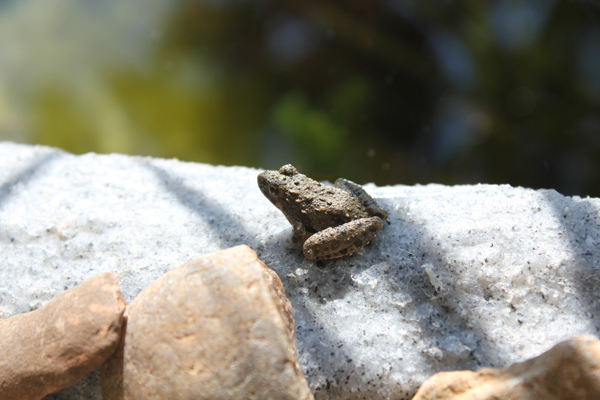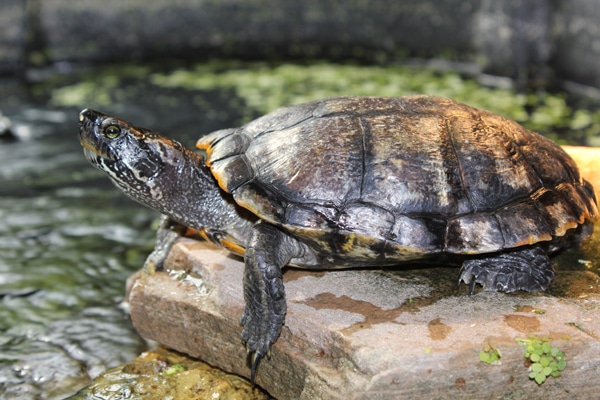The differences and similarities between reptiles and amphibians are challenging to identify.
Those keeping reptiles or amphibians are affectionately called 'herpers.' The name is derived from herpetology which is a branch of zoology that studies reptiles and amphibians. Herpetology includes turtles, snakes, lizards, tortoises, amphisbaenids, crocodiles, toads, frogs, caecilians, newts and salamanders. The name reptile, refers to creeping or crawling animals. The name amphibian refers to dual modes of existence. For example, frogs are like secret agents looking like a fish in their early life and then grow legs as they become adults.
At one time, reptiles and amphibians were zoologically classified as reptiles due to their many similarities. It is speculated that reptiles transitioned from amphibians some 50 million years ago, which perhaps explains why there are so many commonly shared characteristics. Let's first identify those similarities between reptiles and amphibians.
- Ectothermic: Both are ectothermic (cold-blooded) meaning their internal sources of heat are so insignificant that they must rely upon external sources to regulate their body temperature. Body heat regulation is primarily required for operation of their metabolic processes.
- Chordata (animals that possess a spinal column): Both reptiles and amphibians are vertebrates possessing a central vertebral column.
- Skin color alteration: Skin color alteration by concentrating or dissipating melanin is possible in many amphibians and reptiles. Altering their skin coloration aids in camouflage and can help thermoregulation of body temperature.
- Keen eyesight: Many lizards (reptiles) and frogs (amphibians) have sharp eyesight which is crucial for their precise capture of prey by flicking their tongues.
- Defensive traits: Both reptiles and amphibians use camouflage, biting and inflating of the body to avoid predation. Lizards (reptiles) and salamanders (amphibians) both have the ability to autotomize which is a voluntary removal of the tail as a defensive response. One common defense is mimicry where animals that have no innate defensive protection mimic the bright colors of dangerous animals. For example, a harmless king snake might appear as a venomous coral snake.
The differences between reptiles and amphibians are challenging to identify. The below lists are an attempt to work through the haziness of distinction:
Reptiles

stephen g. noble
Turtles bask to thermoregulate and absorb UVB sunrays. Photo by Stephen G. Noble.
- Respiration: All breathing is via lungs, however aquatic turtles have the ability to do a limited gas exchange underwater primarily during extended periods of cold temperature or inactivity. This condition is called brumation.
- Feeding: Snakes are able to disjoin their upper and lower jaw to accommodate swallowing large prey whole.
- Neck Vertebra: Multiple vertebra in the neck, allowing articulation.
- Skin: Dry, scaly, watertight skin. Exposed parts are covered by bony scutes.
- Reproduction: Leathery, soft or hard eggs laid on land or maintained inside the body until hatching. The reptile egg is self-contained and protects the embryo from dehydration.
- Metamorphosis (profound change in form): Reptiles have no larval stages.
- Longevity: Some tortoises have reportedly lived more than 180 years. The popular smooth green snake (Opheodrys vernalis) are reportedly living up to 15 years in captivity.
- Defense: Three layers of protection are normally used by reptiles.
- Avoidance: This is where the reptile evades danger through playing dead or retreats into a protective shell.
- Warning: This is when the reptile alerts potential predators by releasing a foul smell; or they hiss and shake their tail tip like the rattlesnake. Several species of the horned lizard (Phrynosoma), are able to squirt foul tasting blood from their eyes to ward off predators. The dispensing of blood is called ocular autohemorrhaging. When warnings fail, some reptiles attack. Reptiles such as the alligator, snapping turtle and venomous snakes use strong jaws, claws, venom and/or whip their enormously powerful tails to subdue attackers or prey.
- Additional sensory organs: Some reptiles possess an additional sense called a vomeronasal organ (also called Jacobson's organ). This organ is located on the roof of the mouth. It captures chemical molecules for the purposes of locating mates, predators, and prey. Note: It is speculated that some amphibians (Plethodontid salamanders) may also have a similar, but convoluted capability. Some snakes have thermoreceptors (sensing heat) located on their face that allows them to find prey in total darkness.
Amphibians

Stephen G. Noble
Amphibians have moist, smooth or rough skin.
- Respiration: Breathing via gills, lungs or through the skin which is called cutaneous respiration. Their vascularised skin must be moist for this to work. The Lungless salamander (Plethodontidae) conducts respiration through cutaneous means and tissues within its mouth.
- Feeding: Amphibians attempt to swallow their food whole but some have exclusive teeth called pedicellate teeth.
- Neck Vertebra: Single vertebra in the neck which limits head articulation.
- Skin: Moist, smooth or rough skin sometimes with sticky mucous glands that secret waterproof coating to keep skin moist. Oxygen and CO2 can be exchanged through their skin.
- Reproduction: Soft eggs normally laid in water or in damp media. The amphibian egg is a yolk sac enveloped in one or more layers of a clear, jelly-like covering. The egg capsule is permeable to water and gases.
- Metamorphosis (profound change in form): Most amphibians use gills while developing their lungs. Some salamanders such as the mudpuppy (Necturus maculousus) retain their gills throughout their lives which is called neoteny.
- Longevity: The Japanese giant salamander (Andrias japonicus) lacks natural predators and is speculated to live about 80 years. The American bullfrog (Rana catesbeiana) lives about eight years.
- Defense:
- Avoidance: Nocturnal activity and aposematic coloration by many amphibians helps avoid predation.
- Warning: Slippery skin makes it difficult for a predator to grasp. When grabbed, the amphibian secrets a vile tasting, sometimes toxic substance through the skin, hopefully resulting in rejection by a predator. Tetradotoxin, produced and released through the skin by newts is deadly to reptiles, fish, birds and mammals ingesting the substance.
- Additional sensory organs: Some amphibians, using their lateral line (such as a tadpole) may sense water pressure changes to locate prey.
It is estimated that there are more than 8,000 reptiles and 6,000 amphibians inhabiting the Earth. They are as small as a dwarf gecko (Sphaerodactylus) or Paedophryne amauensis and as large as the Chinese Giant Salamander (Andrias davidianus) or saltwater crocodile (Crocodylus porosus).
With such diversity, it is easy to see why reptiles and amphibians are such 'major players' in the pet industry. Enjoy your herps!



